“I noticed whenever something happens whether it’s some kind of disaster, some people get killed or one person gets killed, well that’s just what happens the world just keeps on turning, life goes on, and it’s disgusting but that’s just what happens. So that kind of stuff I sometimes put into the work because that story was happening at the time when I did the body print.”
Adelaide Damoah is a British born artist of Ghanaian descent who works mainly with paints. Her work focuses on the female body, form and movement. Influenced by personal experiences, Damoah’s work often highlights social issues that are important to her. She has, to date, had four solo exhibitions in the UK for the series This is Us, Supermodels, Black Lipstick, and a domestic violence exhibition for the registered charity, the National Centre for Domestic Violence. Damoah, who was late to be diagnosed with Endometriosis, organised a communal SCREAM! march outside the UK Parliament in 2006, to raise awareness of the annual Endometriosis Awareness Week. Her current work tells a personal story of family, love and pain, and involves her using her body as a “living paintbrush” to paint. Inspired by Yves Klein, Damoah also cites Frida Kahlo, Jean-Michel Basquiat, David Hammons and Ana Mendieta as her influences. Also, in addition to being a founding member of the Black British Female Artists Collective (BBFA ). Damoah has a series called Art Discussion, on Youtube, where she interviews fellow visual artists with the aim of providing advice to those starting out in art.
___________________________________________________________________________
Donalea Scott: Can you tell me a little about your practice and how you came to it?
Adelaide Damoah: I studied biology to degree level and started my career working in the pharmaceutical industry. I was diagnosed with endometriosis while I was working, it got to the point where I was spending so much time off sick. During that time I stayed in at home I was exploring my artistic practice. I was always an artist. It was one of my favourite subjects but it wasn’t one that I ever took seriously. I was very much encouraged to go the academic route but my passion was really art. In 2005 people started offering me money for the paintings that I was making so I had to make a decision am I going to leave pharma and focus on my art because I think I can do it. I had my first solo exhibition in 2006 and I haven’t looked back since.
DS: So you are not necessarily “classically” trained in art?
AD: Definitely not!
DS: How has your illness impacted your practice, has it restricted your ability to make certain types of art?
AD: I would say that times when I have been sick have been times when my brain is most active creatively. I would also say that asides from it bringing me to art in the first place it also forced me to rethink life and, I suppose, forced me to rely more on my creative side of my brain then the more logical side of my brain. I think it’s caused me to be more balanced. I wouldn’t say it’s taken anything away from my work.
DS: What are you trying to achieve with your work?
AD: Well it depends on what I’m working on to be honest. I tend to work on series so it depends on what I’m interested in a particularly moment in time. Obviously, I have looked at domestic violence, race, gender issues, and sexuality.
DS: Now I know you don’t consider yourself as an activist artist but your work does tend to explore social issues. What is it activist art means to you and why don’t you identity it in your practice?
AD: I guess art which really is engaging in socio-political conservations or trying to challenge dominant thought in society, culture. By that definition then I would say that my work probably does fit into the definition because that’s what I have been doing within every series that I have now done, there has definitely been an intention behind it to provoke conversations and discussions, I’m just not actively going outside and holding public debates.
DS: So you think that activist artists must actively engage in public debate and/or protest?
AD: I mean yeah! If I was making this kind of work and then I was doing community workshops and involving the community in that kind of way to discuss political issues or social issues through the vehicle of the work then I would definitely say that actively engaging in activism through my art. But I’m not doing that. I consider myself to be a fine artist but the subjects that I tackle in the work means that, I guess, it can be perceived as activist art but it’s in a softer way then somebody who’s really going out there and is actively attempting to be an activist by engaging publicly and using public spaces to address those kinds of issues. I don’t think I necessarily do that.
DS: Fair enough. Please tell me about your current work.
AD: At the moment I’m really focused on representations of the black female body. It feels really cliché when people say my work is about identity politics. I don’t see my work in that way. However, with the way that I am working at the moment I am definitely investigating my personal history, my family history, all of those things packed into my identity as a black British female of Ghanaian descent, telling a stories about diaspora, diaspora people, were we fit. And then there is another conversation that I am having with Yves Klein and with the body painting that he did using white women, who were culturally seen as being aesthetically beautiful. In order to create an aesthetically pleasing work he was directing these women in front of audiences naked and basically creating a passive female to be objectified by the male gaze. By me directing myself and using myself, as a black woman, I’m then having agency over how I am choosing to show myself, how I want people to perceive me, as a black woman, and removing the possibility of them objectifying and eroticizing by the way that I present myself or present my performance. Do you see what I mean?
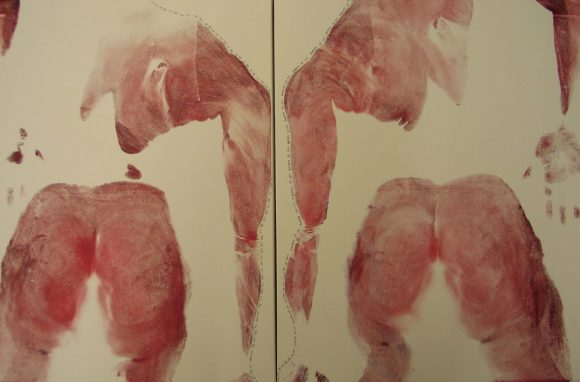
What the Parents Said, Diptych, Oil and Pen on Canvas, 30 x 24 inches each, 2016
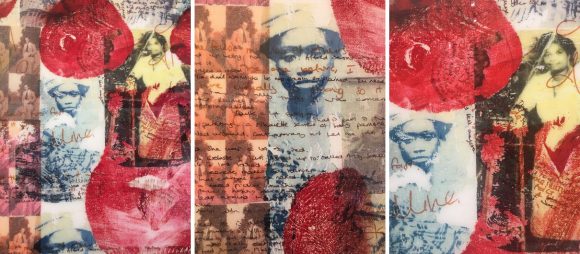
Close up detail section of “My Dad Thinks I Am Honest”, Oil, ink and epoxy
resin on canvas, Full painting 24 x 36 inches
DS: Yes. Though, how do you know when what you have done has “worked”?
AD: I don’t know that I can really know 100% but I feel like where I am at the moment I know more than ever before. I’ve been practicing for more than 12 years now and I’ve never be more sure about what I’m doing then I am now. And that’s a feeling more than a logical thing were I’ve made this work, I’ve had this exhibition, and this was the result therefore this was a success or people understood what I was trying to say. For me it’s the feeling that I get when I finish making the work it feels like I’m being my most authentic self and so I’m the most comfortable with it. When we do a performance I’m not nervous, I’m not scared, I’m content, I’m happy. But I think obviously the response that you get to the work when it’s seen by the public, whether it’s an exhibition or a public performance, that response that you get from the public, I guess, is final confirmation.
DS: Can you think of an example when you were given feedback from the public that acted as final confirmation?
AD: I did the performance recently, one guy said, and this is from an art world insider somebody who is very high up in the art world, he was expecting to see some kind of sexually titillating show. And at the end of it he said was “I’m disappointed” because somehow Adelaide managed to completely desexualise this whole thing and make it high art. “I’m impressed but I’m disappointed”. So you see my intention with that performance is to have this conversation with Yves Klein that kind of subverts the way that he worked, by using other women’s bodies, and using mine as art in a way which completely stripes the atmosphere. What you are going to get is something really intense, really serious, and some people are describing it as a spiritual experience. Women there were worried about my vulnerability, they thought I was going to feel exposed, but when they saw that I was feeling powerful in that moment they relaxed and was able to enjoy that a woman is going out and exerting herself in a way that’s not controlled by any man or what society says she should or should not be doing.

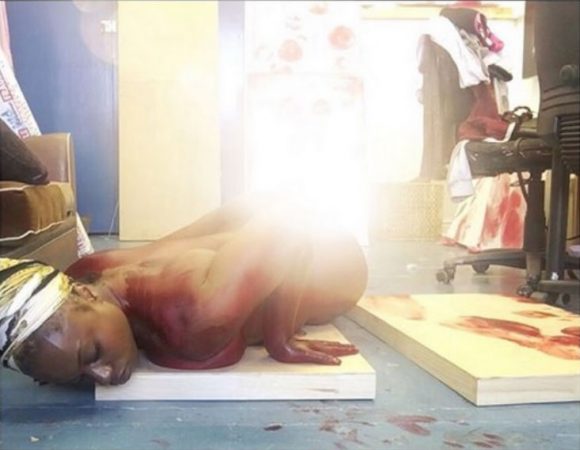
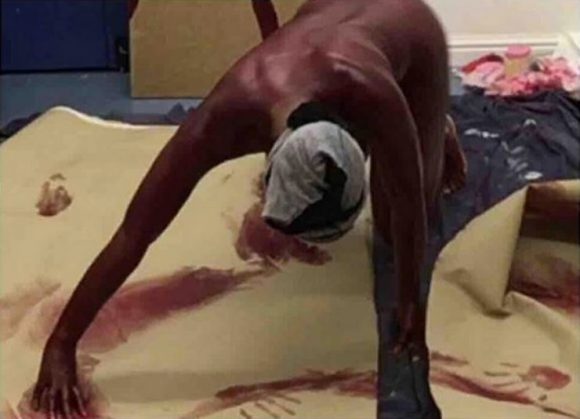
DS: Do you think at all about the public when you are creating a piece?
AD: No. That’s the short answer, no.
DS: Why not?
AD: There’s no point because the minute you start thinking about the audience you get confused you start creating things that are not authentic, it can be a big problem for the work. I’ve been there and those are the times that I have struggled to actually make work because then it’s not coming from me it’s coming from somewhere outside and it’s not even somewhere outside its somewhere that doesn’t exist. You can’t know what the audience wants to see because you don’t know who the audience is going to end up being. So, for me, the most honest thing I can do and the thing that’s not going to make me lose my mind is if I’m making work that I want to make, that’s authentically coming from me and not coming from some external source.
DS: To that point, do you think you know your audience? Do you not think you have a following, or is the audience being exposed to your work somewhat out of your control?
AD: I think so, yes. I’ve obviously been practicing for this amount of time and certain people have been following my work. But, obviously, in order to sustain myself you have to keep on reaching out to new audiences and ultimately the aim any artist wants to really be selling their work at the high level. I want to penetrate the higher end fine art collectors, dealers, galleries, you know the real art world, while at the same time still reaching out to people who are outside of that. On the one side wanting to reach out to people who feel intimidated by going to art galleries and things but on the other side there’s also the need to have a commercially successful and viable career.
DS: Ok, well then thinking about market penetration does your work have a global audience?
AD: In terms of the actual art world I’m still like a baby in that space commercially. I have just recently had some work shown in Lagos, and in Ghana, also Italy and Hungary. I wouldn’t say I was an international artist by any stretch of the imagination. That’s definitely a target, that’s definitely an aim but that’s something that’s more realistic once you got representation by a decent size gallery who has those kinds of international connections.
DS: What do you believe is essential for communicating with an audience?
AD: Usually whenever I have an exhibition I will participate in some kind of panel discussions so that the people who are there can actually hear what I’m talking about. Anybody who really cares about my work will go to my website, there is plenty of information online, and read what my intentions are as well. I do actively try and ensure that there is a message that goes with the work but I also do understand that once the work goes out into the world you don’t have any control. You can say what was intended as much as possible but ultimately you don’t have any control over how people perceive the work because people are going to perceive it how they want to perceive it. I have experienced this so many times.
DS: Can you give me an example of one of those experiences?
AD: I had Supermodels in 2008 or 2009 and a young guy who was studying at SOAS came to the exhibition. I sat down and had a chat with him, this was after the opening, and he was kind of interviewing me and asking me what I was trying to say with this work. I was explaining that I was trying to provoke a conversation, use the work as a mirror to what was happening with everything surrounding women, body image, the size zero debate, supermodels dying from anorexia related complications, and race was one of the things that came into the conversation. He was insisting that the whole exhibition was about race when there were multiple ethnicities represented in the exhibition. He was very passionate and very insistent that this was what he got from the work so I just have to leave it and respect that’s what he got from the work. Different people have their own interpretation. The good thing is that it provokes discussion, it provokes conversation and that to me is a massive compliment, that producing a visual image has so much impact on human beings they end up having very passionate and heated debate sparked off by my work.

Alek, Supermodels Series 2006- 2008, Oil on Canvas, 60 x 40 inch
Beth, Supermodels Series 2006- 2008, Oil on Canvas, 60 x 40 inch
DS: Following on from your comment about working to spark debate. How do you think debate might create the social change you’d like to bring about?
AD: I’m not convinced that by myself, with my work, that I have the power to create some kind of social ripple. I don’t believe that I have the power to change people’s minds. When I’m making work the ultimate aim is that I’m making work that I care about, about issues that I care about and if that work then has an impact on people who look at the work, whether that’s one person that comes into my studio or multiple people who see my work at an exhibition or somehow something goes viral, then I think that’s wonderful. But I don’t make the work with the intention to do that because if I did put my energy into making the work do that I would probably lose my mind. It is a huge responsibility.
DS: But you have tackled some very serious topics in your work, such as domestic violence.
AD: Well, that one a specific charity asked me to make that work. They wanted to do something to help raise awareness of domestic violence month, in October, that was different to the usual soirée, champagne cocktail dinner party. And so they approached me and asked me if I’d be interested in working with them to do that. I had a personal experience myself and also several women who had quite serious experiences with domestic violence, so it is an issue that is very close to my heart, and something that I was thinking of tackling myself in the work anyway. It was the perfect opportunity try and do a project telling different stories about domestic violence rather than the standard story.
DS: Did your personal experience of the topic make the project more emotional or harder to do?
AD: It was the same kind of process but it was emotionally and psychologically draining. The charity got me in touch with several domestic violence survivors so I interviewed several people who had been through that, listened to their stories and then had to put that into the work. So it was a particularly tough thing to get through. I feel kind of ridiculous saying that was tough given the stories that these women were telling me, the things that they had been through. For me to be able to tell their stories, honestly, was a privilege. But it was painful.
DS: Do you go about research for other series the same way?
AD: Well it depends. The supermodels was more of a personal investigation and personal research, just read as much as I could around the subject as opposed to talking to people. I did talk to a charity, at the time, called the Beat with regards to eating disorders but I didn’t feel comfortable speaking to survivors of eating disorders. Felt like too much of a leap to interview people and then link that to this project that’s called supermodels because then you’re making all sorts of assumptions about the reasons why people develop eating disorders. But for how I’m working at the moment I am interviewing my family members. My mum was born in 1946 which was 11 years before Ghana got independence in 1957, so she was alive when Ghana was British Gold Coast. I’ve interviewed her about that, I’ve interviewed my gran, I’m going to be interviewing other family members, and then I’m going to start looking more broadly at colonialism as a whole.
DS: I have to say, I’m really interested in the ‘900 lives’ painting from your current work. I assumed it‘s on genocide, of some sort, but could you explain that one to me?
AD: Yeah, the that happened in Haiti. I just wrote on there that “900 lives lost and the world keeps on turning like nothing happened” just because that’s one of my things. I noticed whenever something happens whether it’s some kind of disaster, some people get killed or one person gets killed, well that’s just what happens the world just keeps on turning, life goes on, and it’s disgusting but that’s just what happens. So that kind of stuff I sometimes put into the work because that story was happening at the time when I did the body print. There was another where the police tased a footballer in Manchester, they were discussing it on LBC at the exact time that I was making the work so I wrote his name on the work. It’s sort of a show of respect that I try to do, but it has to be happening at that time.
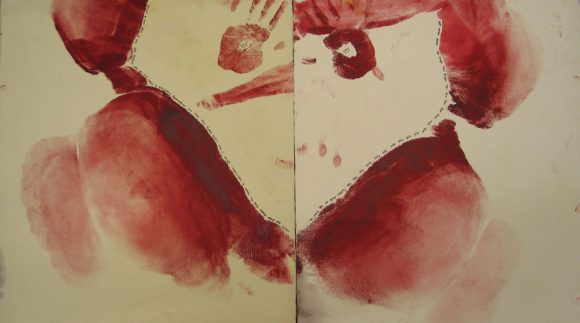
900 Lives and the World Keeps Turning Like Nothing Happened, This is Me
Series, Oil and Pen on Paper, Diptych, 2016
DS: Can you tell me about a time when you felt like you were making a difference through your practice?
AD: I had open studios earlier on this year, which is when we open up the doors to the public. This really nice lady came in my studio when I had gone, my friends were there, and when I came back she was in the middle of telling them that she felt that this work, and these are my body prints that she was referring, has been created by a very strong woman physically and emotionally. I got introduced to the lady and said to her I may look strong but I actually have my own weaknesses, I have endometriosis. She bursted in tears because she said when she was younger she had endometriosis and she had to have a complete hysterectomy. And this was what she was seeing in that work. There is one particular piece that the way that I was positioned looks like a shape of a heart. At the time when I was making it that wasn’t my intention but when she saw it she said it looked like a uterus. And, so for her that work was so impactful she went away singing my praises to everybody who would listen sending everybody to my studio. She left lighter because of all the tears and she got some sort of positive energy out of it.
DS: Do you think that the topics in your work function specifically for UK or European audiences? And how do you think audiences outside the UK, like in Africa, react to the messages in your work?
AD: In my head I think that there is definitely going to be a difference in the way that Africans view my work compared to the way Europeans view my work but I’m not sure. I was in Ghana for six weeks just this summer. I was involved in an artistic project with the collective that I’m in BBFA . That project didn’t involve me doing this particular performance but it did involve me doing another type of performance where we were fully clothed. I was slightly worried about the reaction to the performance because Ghanaian society is a lot more conservative than here. It’s a bit complicated to go into but it was a re-enactment of Mami Wata, which is a water deity. We were worried that in referencing Ghanaian water deities that we would get into trouble but that didn’t happened. We actually had an excellent response to the exhibition.
DS: Did you, with the collective, perform that particular performance in Europe?
AD: Oh, no, we haven’t done it in Europe. The first time we done it was in Ghana. We want to try and tour it but that obviously requires funding.
DS: Do you think that the traditional native element of the performance will appeal to European audiences?
AD: It wouldn’t necessarily have to be Mami Wata. Mami Wata was one element, that was just the performance side, but the installation as a whole was a direct response to pollution on Ghana’s beaches, in particular Jamestown Beach the pollution there was crazy, so I think that can be replicated anywhere in the world. That’s definitely not something that’s unique to Ghana. The only thing that is unique to Ghana is the Mami Wata water deity but that water deity is called different things in different parts of the world has exactly the same mythology surrounding her. She is very similar to a mermaid or a siren, so the same thing could be adapted and taken anywhere in the world.
DS: Moving on, can you describe a piece of work you’ve done that you thought was particularly successful, or are particularly proud of?
AD: I would just say this current work that I’m working on. I just feel like it’s the best work I’ve done. It’s just different compared to the work that I was making previously. I was quite proud of the This is Us series of work, which I made 2015, I had a solo show in 2015, that whole series was about sexuality and relationships.
DS: Why do you think it is successful?
AD: I just feel in myself intellectually, emotionally, my whole self feels like this is what I am supposed to be doing and that this is the best work that I have made. My previous work felt sort of restricted, possibly, by the fact that I hadn’t been classically trained and I was having to teach myself. Was getting to the point when sometimes I was feeling frustrated and feeling like I wasn’t able to say what I wanted to say as effectively as I wanted to say it. Whereas now I feel like I can say anything I want. The way that I am working now there is so many different directions that I’m starting to investigate and move into in terms of the way that I make the work, and also intellectually in terms of the way that I research the work as well.
DS: Are there particular markers or indicators you have for success?
AD: Well I guess monetary. That used to be the obvious way that I used to measure success because when I was working in pharma, you know, we had targets. That’s the way you measured whether something was successful or not by how good it was selling. But unless you are represented by a gallery so that your work has exposure to people who have the potential to buy it, it’s difficult to measure in that kind of way.
DS: So which series did better monetarily This is Us or This is Me? Or is it just down to feeling?
AD: When I did This is Us I sold work at that exhibition, I sold prints and anything else. To compare this series of work to that wouldn’t be fair because I haven’t had a solo show for that yet. I’ve showed the work at different small events, and I’ve sold some as well, but I haven’t had a solo show were that work has been exposed to lots of people and potential collectors but that’s for the future so we shall see.
DS: If This is Me doesn’t end up making as much money as This is Us will you consider it a failure?
AD: No, no, no, no! I feel like this new work is so far ahead of This is Us and it’s just one series of work later. I feel intellectually and emotionally much more connected to this work as well. I don’t see failure in the same way that most people see failure, anyway.
DS: Would you like to elaborate on that?
AD: It’s just that when something doesn’t work, let’s say call it failure for arguments sake, that’s just an opportunity to learn something, it’s an opportunity to grow stronger and get better. There always has to be that friction of dissatisfaction that propels you to move forward and become more creative. Just because I’m saying that I’m emotionally and psychologically never felt happier in my practice doesn’t mean that I think that it’s reached its peak or that I think that it can’t be improved. There’s always, always, always room for improvement, always!
DS: What do you want your audience to do upon seeing your work?
AD: I’m all for constructive feedback, constructive criticism, discussions and when people see something in the work that caused them to have some kind of reaction. I love that and I’ll absorbed all of that and use that to help me grow. But people who want to be negative for the sake of being negative that’s not constructive and it’s not helpful. But I haven’t had that so I can’t really say.
DS: Can you describe a piece of work that you thought maybe didn’t work?
AD: There are so many! It’s just the nature of being an artist you are going to make stuff that is crap all the time. That’s how it works but I guess my Black Brit series of work, which is responsible for my first solo show, and it’s the one that got me lots of media attention when I first started, but now I can’t stand that one.

Diana, Black Brits Series 2005-2006, Oil on Canvas, 36 x 36 inch
Naomi, Black Brits Series. 2005-2006, Oil on Canvas, 40 x 40 inch
DS: Why didn’t you like it?
AD: I think that it was very badly painted and the whole idea was kitsch. I just don’t like it! I know that there are lots of people who do like it and people ask me why it’s not on your website anymore and ask me if I would be interested in re-exhibit it again but I’d rather not have to relive that one thank you. That series of work showed me that I’m not a portrait painter and I thought I was at the time, I thought that I was amazing, but this is what hindsight tells you. This is why you can never get too comfortable; why you always have to be learning.



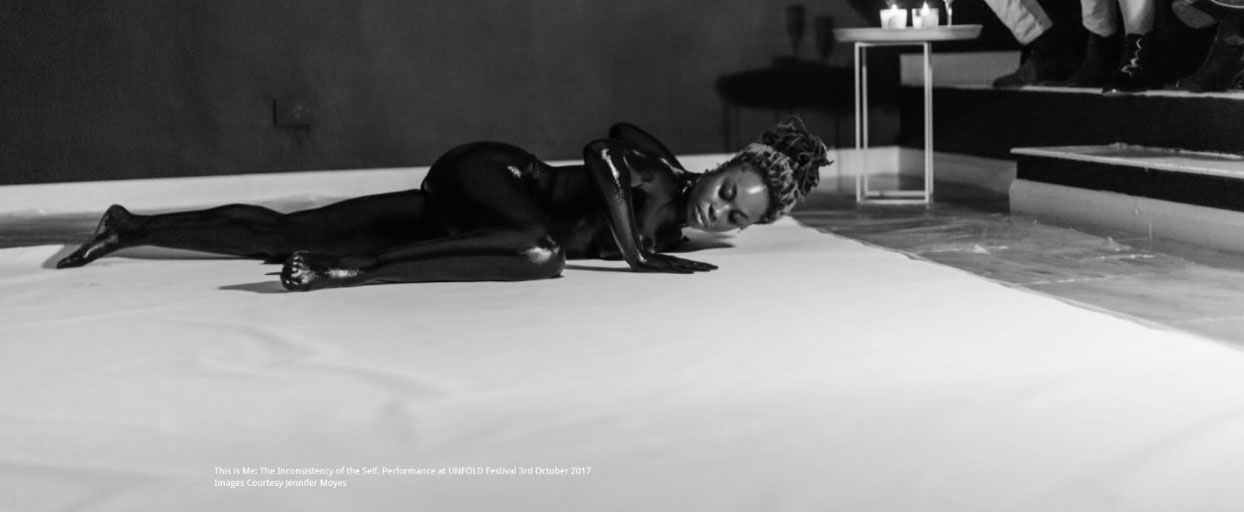
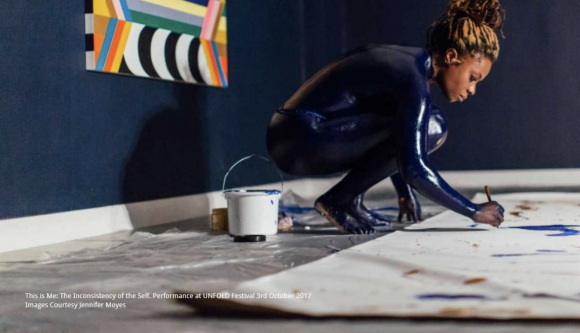
You must be logged in to post a comment.